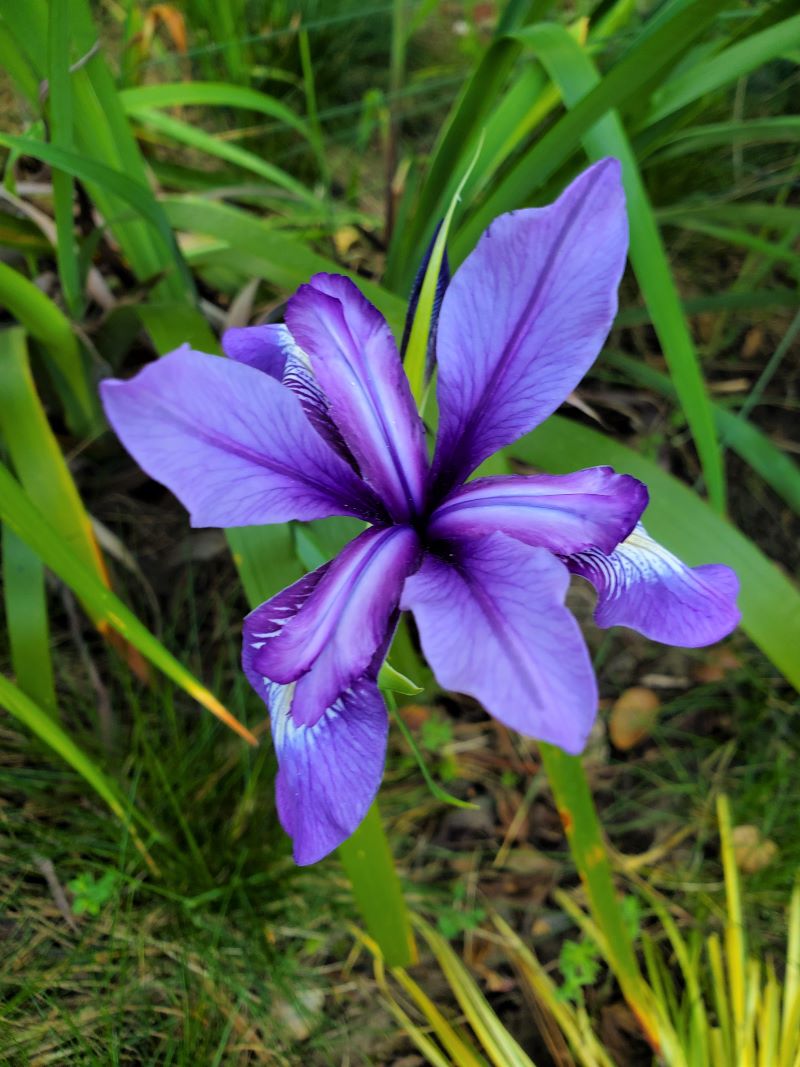September Garden: Digging and Dividing
By Josh Reilly
Time seems to slow down slightly in August. It’s too hot to do anything but water. But then September arrives, and suddenly there is almost too much to do. Time to plant your Fall garden — broccoli, cabbage, leafy greens, carrots, potatoes, onions, and late Summer/Fall flowers. Time to divide perennials and grasses. Time, also, to enjoy your late-season perennials. Salvias are in full flower, as are many Sedums, including “Autumn Joy,” the pink blossoms of which attract bees. Butterfly Bush and Gaura are still going strong. Epilobium (California Fuchsia), is sporting narrow orange, red or white blossoms. Some orange and white California Fuchsias tend to sprawl, but this only adds to their wild, rugged charm. And of course, here in the Valley, “Naked Lady” (or Pink Lady or Belladona amaryllis) lilies are bursting out of the dirt. They are everywhere along the roadside, unattended but content, and bordering gardens, their leafless, reddish (naked) stalks and bright pink and magenta blooms announcing the end of Summer. These indestructible bulbs can be lifted and replanted during or after flowering. Replant them so that the top part of the bulb is exposed, removing the spent flower stalk. They don’t much like replanting, so expect to wait a year or two before you see much foliage (in Spring), or “naked” flower stalks in late Summer.
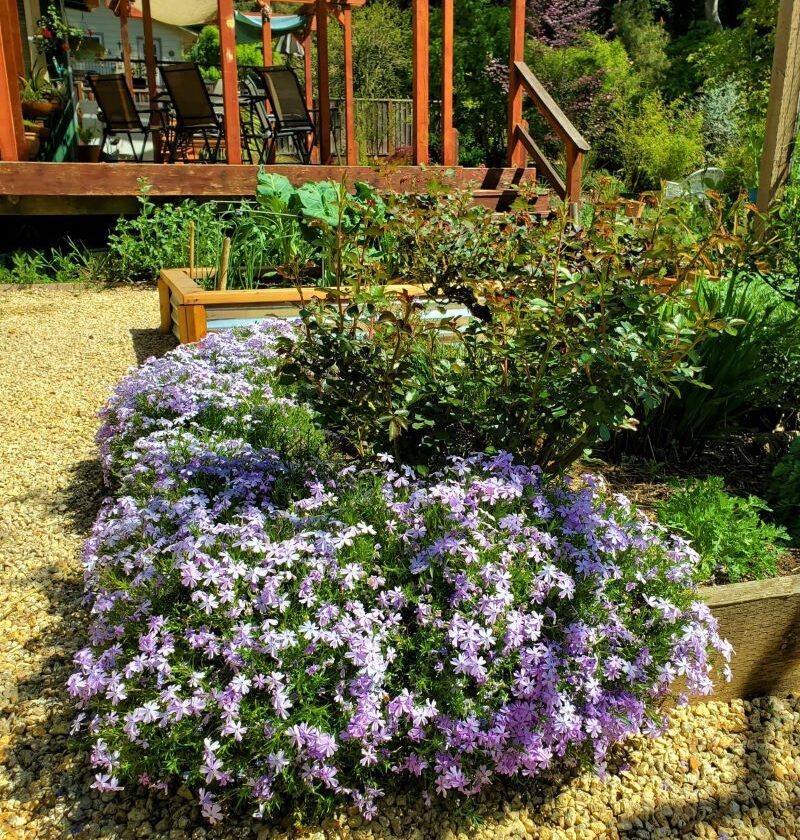
Moss phlox 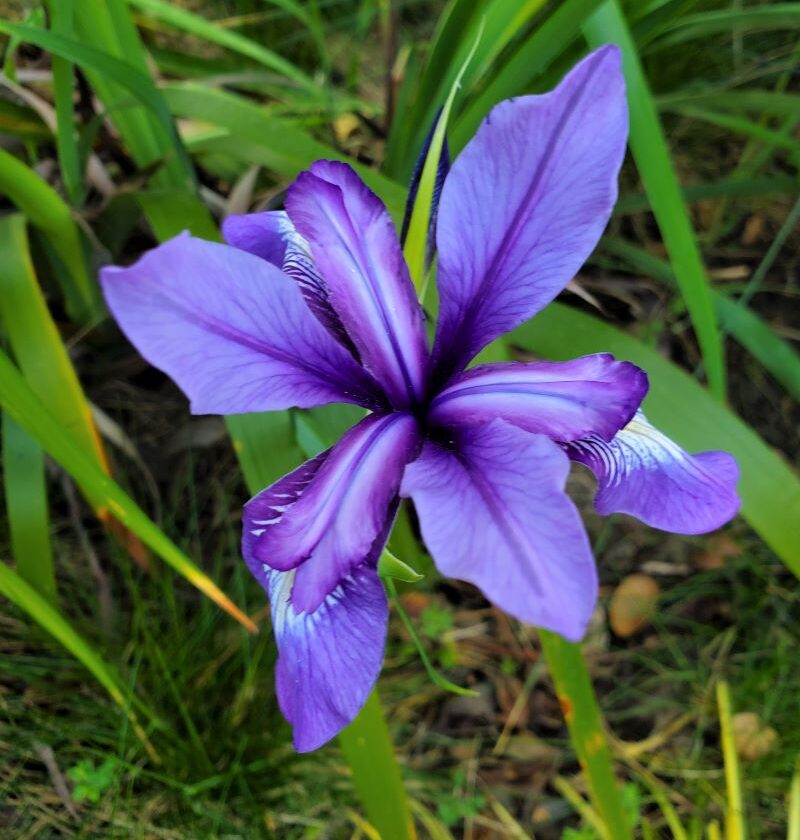
Marin iris 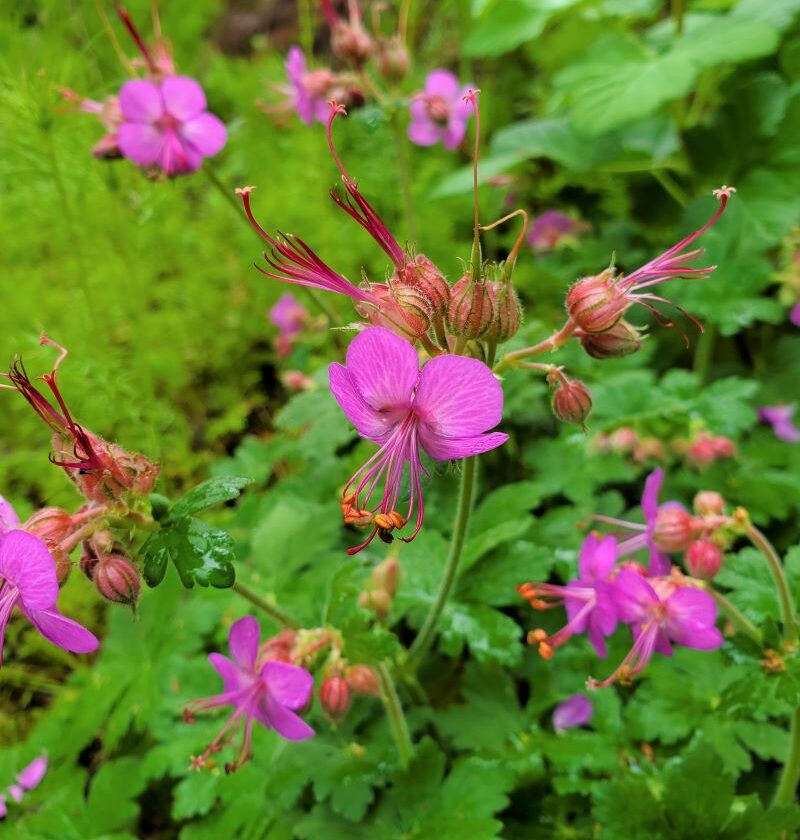
Rock crane’s-bill 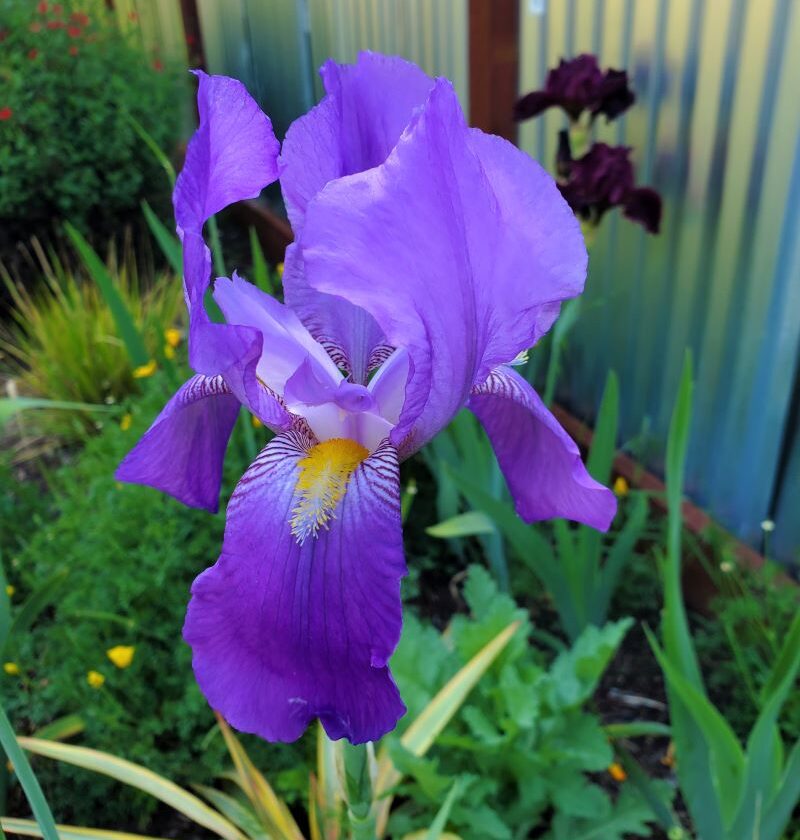
Sweet iris 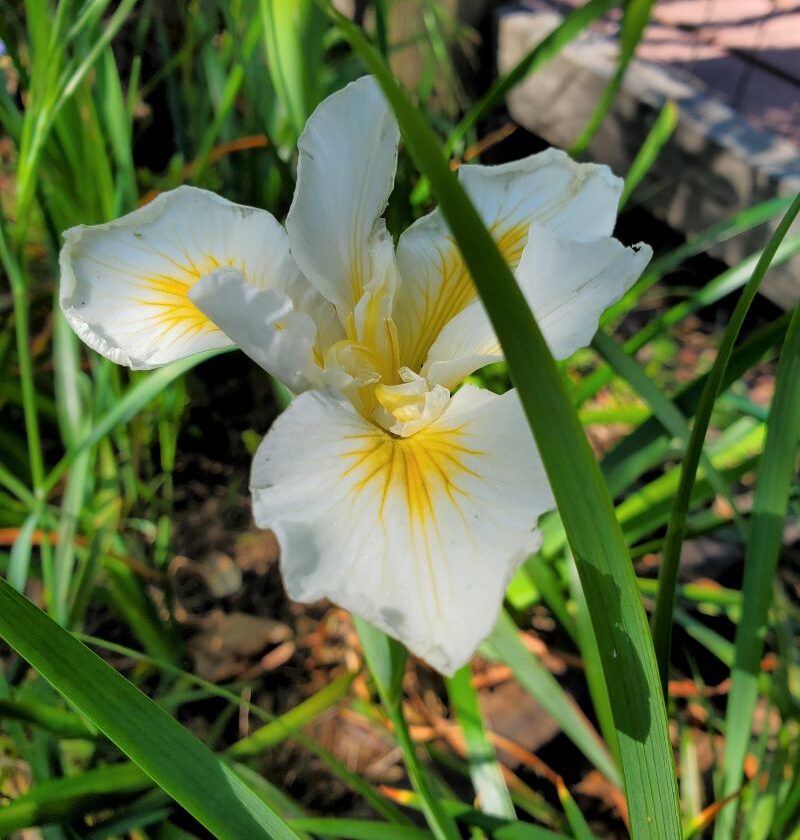
Yellow leaf iris 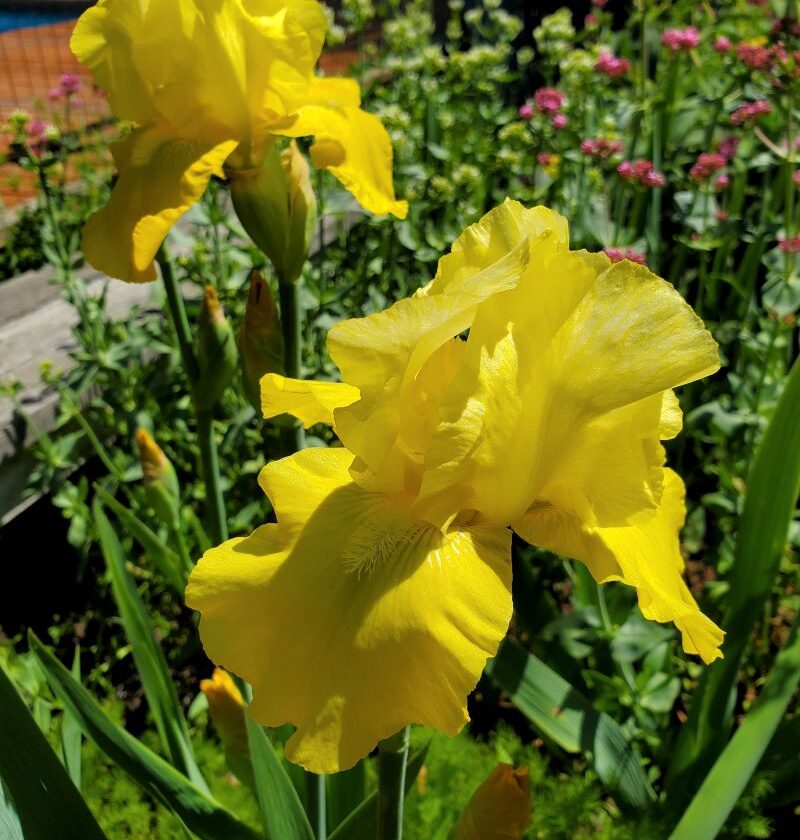
German iris
Divide and Conquer
Irises of all kinds should be lifted and divided now. Using a digging fork, put the full blade into the soil and lift whole clumps carefully to the surface. Be advised, established native Irises can be tightly clumped and difficult to lift. A D-handled fork works well, but a long-handled fork provides more leverage and may be easier on your back. Once lifted, pull the bulbs apart and pick out long, thick ones. The smaller hangers-on can be tossed. They are unlikely to perform well. Cut the foliage down to about 3 inches and replant the choice bulbs. Put them in the same spot or elsewhere, about two inches down with the top of the bulb facing up and the trimmed foliage exposed. If it’s the end of the day and a cold beer sounds better than an hour or two of replanting, put your choice bulbs in a bucket with a little soil on top. They’ll be fine there for a few days. If you have run out of space, they make great gifts for friends and neighbors. Easy to plant, they require little attention or water if you give them some shade. They’ll come back year after year with deep, rich indigo blossoms.
The related Pacific Coast Hybrid Irises are available in an array of startlingly beautiful colors. Treat the larger Bearded Irises more or less the same way. Mature bearded Iris clumps are easier to dig and divide. Smaller, bearded Iris bulbs, unlike the smaller native Iris bulbs, may eventually become big beauties, given time and space to grow, so if you have room, give them a chance. Proviso: Gophers in my yard have never touched the native Irises. They took about 80% of my bearded Irises 2 years ago! And Irises do not like gopher baskets.

Many ornamental grasses can be dug and crudely halved by hand, with a shovel or if they are big enough, an axe. Miscanthus (Silvergrass), Calamagrostis (Reed grass), bamboos, Chasmanthium (Sea Oat Grass), and native Muhlenbergia (Deer Muhly) grass can be divided this way, as can certain Geraniums (with fibrous root balls), ground covers, like Veronica and Ceratostigmata or “Blue Plumbago” (love the names). Remove new side shoots from Aloes and Agaves and toss or replant now. Time to remove new, invasive Spanish Lavender and Rock Rose seedlings. These can be gently dug and potted if you have space, but it will take them a few years to get to the one-gallon size you see at nurseries.
Josh Reilly, aka Uncle Skip, writes about seasonal gardening from his home in beautiful Ben Lomond, California.
Photos by Josh Reilly
The San Lorenzo Valley Post is your essential guide to life in the Santa Cruz Mountains. We're dedicated to delivering the latest news, events, and stories that matter to our community. From local government to schools, from environmental issues to the arts, we're committed to providing comprehensive and unbiased coverage. We believe in the power of community journalism and strive to be a platform for diverse voices.

